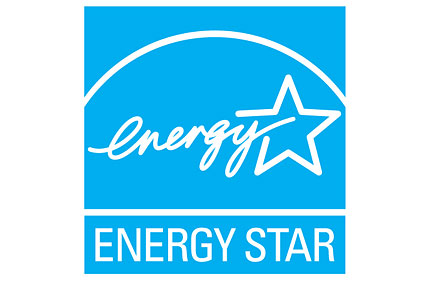According to Abigail Daken, product manager for the Energy Star program, “Climate controls can do the things that programmable thermostats do, but can also do more than that. That’s why we’re calling it climate controls. We consider it a very different kind of product.”
The most notable differences in the draft of the new spec are that now a programmable thermostat must have additional communication ability and be able to pass a usability test. The goal behind this spec, as with all Energy Star specs, is to provide consumers with product information that will enable them to save money and energy.
“We think the opportunity to save money is there — it’s always been there,” Daken said. “But the devices that have been on the market traditionally have not really fulfilled that promise, and we’re hoping to stimulate a market for devices that do.”
Communication Ability
To qualify for the Energy Star Climate Controls label, a unit will have to communicate to something outside the HVAC system such as a utility demand response system, a wireless LAN, etc. As another example, Daken said, a qualifying unit could be able to call the user to alert him or her of issues in the HVAC system, or send a text message.
“The basic idea is to make sure that thermostats, or climate controls, enable third-parties and OEMs to offer consumers a wide variety of creative energy management tools and applications, as well as allowing the utilities to use these devices for demand response,” Daken said. “We do expect devices to be available through utility channels and also through retail.”
She continued, “It’s a very exciting time to be involved in the thermostat space because there’s so much creativity right now. We’re really trying to make sure consumers have access to that by putting in these communication requirements that can really drive a lot of capability.”
Usability Test
Not only will the new spec require thermostats to communicate, it will also require them to be tested for usability. “We are devising a performance-based test for ease of use by consumers,” Daken said. She noted that the Department of Energy (DOE) is leading this effort. “We’ve been working very closely together on this — EPA and DOE — with great results.”
The reason behind this new test is that EPA identified usability as one of the main problems that prevented programmable thermostats from living up to their energy-saving promises. “There is some data that shows that users who install a programmable thermostat do not lower their energy bills,” Daken said. While she noted that not all studies have shown this, she continued, “It seems clear that usability, particularly the ease of programming, is a significant factor.”
Daken added that this test is a unique effort. “It’s not uncommon to test products for ease of use. But it’s generally done as part of the product development. It is not generally done to rate them — give them an explicit pass/fail kind of rating. That’s what we’re trying to do.”
Because of the unique nature of this test, Daken noted that the agency has approached it very carefully. “As you can imagine, when you take a group of users and you ask them to perform tasks on a specific device, there is wide variation in results.” To counter this, EPA has requested extensive external reviews and outside organizations to “basically test the test,” she said. At press time, EPA was reviewing applications with the intent to select three different organizations to perform the test. “What we’re looking for is consistency between the results at different labs,” she said. “We’re concerned to make sure that it’s repeatable.”
Manufacturer Participation
Several manufacturers reported that they are currently working with EPA on the development of the Climate Controls spec, and they are hopeful that their products will qualify to earn the new label once it launches next year.
“We’ve been taking stakeholder feedback throughout this process,” Daken confirmed.
“We are very much working with the EPA on the Energy Star for Climate Controls,” said Tim Simon of Radio Thermostat Co. of America. “Our goal is to be in production when the new rules are approved.”
Stuart Lombard, president and CEO of ecobee, said that his company is also an active participant in the spec development. “We feel very positive that our products would qualify under any new spec for thermostats that may come out of this effort,” he said.
Pat Tessier of Honeywell added, “We continue to monitor, participate, and provide input in the EPA’s stakeholder process for the development of the new specification.”
A few manufacturers named specific products that they believe will qualify for the Energy Star label once it’s finalized. Geoff Godwin of Emerson Climate Technologies pointed to his company’s 1F98-0600 marketed through Comverge. Kurt Wessling of Jackson Systems noted that all of the following products will likely qualify: WEB Comfort system, T-32-P thermostat, T-21-P thermostat, and WCT-32 Wireless Comfort thermostat.
John Peil of Venstar Inc. said, “With the addition of Internet capabilities to our T5800 and T6800 Color
Touch thermostats, we are working hard to ensure that our thermostats will be Energy Star compliant when the specifications are released.”
In addition, Lux Products Corp. Lennox International, and Ingersoll Rand confirmed that they intend to evaluate the new spec and submit products for testing next year.
Coming Soon
The first draft of the Climate Controls spec was released in the spring of 2010, and a new draft is expected this December. Ultimately, EPA intends to finalize the spec in February 2012. Additionally, Daken said, “We are trying to make sure that the laboratory infrastructure is in place so that when the specification is released, there will be immediate availability of laboratories for testing this, so that units can qualify right away.”
Sidebar: Energy Aware: Another Label for Thermostats
In addition to EPA’s Energy Star label, there is another label for programmable thermostats that was released by the National Electrical Manufacturers Association (NEMA) in June 2010. Called Energy Aware, this label is intended to help consumers identify and purchase a programmable thermostat that increases energy efficiency and reduces energy bills without sacrificing system performance and individual comfort. (In contrast to EPA’s new climate controls specification, many of the qualifying units for Energy Aware will be similar to the programmable thermostats that people are used to seeing on the shelf.)
Currently, the Energy Aware website, www.getenergyaware.com, lists Braeburn, Honeywell, and White-Rodgers as participating partners. According to Geoff Godwin of Emerson Climate Technologies, “White-Rodgers is a member of NEMA and co-sponsor of the Energy Aware label. Most of our Emerson Blue programmable thermostats will carry the Energy Aware label.”
Pat Tessier of Honeywell noted that several Honeywell programmable thermostats have been certified under the Energy Aware spec. “We support Energy Aware and look forward to working with NEMA on the evolution of the program.”
Jackson Systems and Lennox International reported that they are currently evaluating the Energy Aware program to determine if they will participate. Venstar and ecobee have opted not to become involved with Energy Aware, instead focusing on their involvement with the new Energy Star spec for climate controls.
According to Tim Storm of Ingersoll Rand, “The Energy Aware label is new and will certainly be something we will pursue if the Energy Star requirements do not meet our expectations.”
Publication date: 09/19/2011






